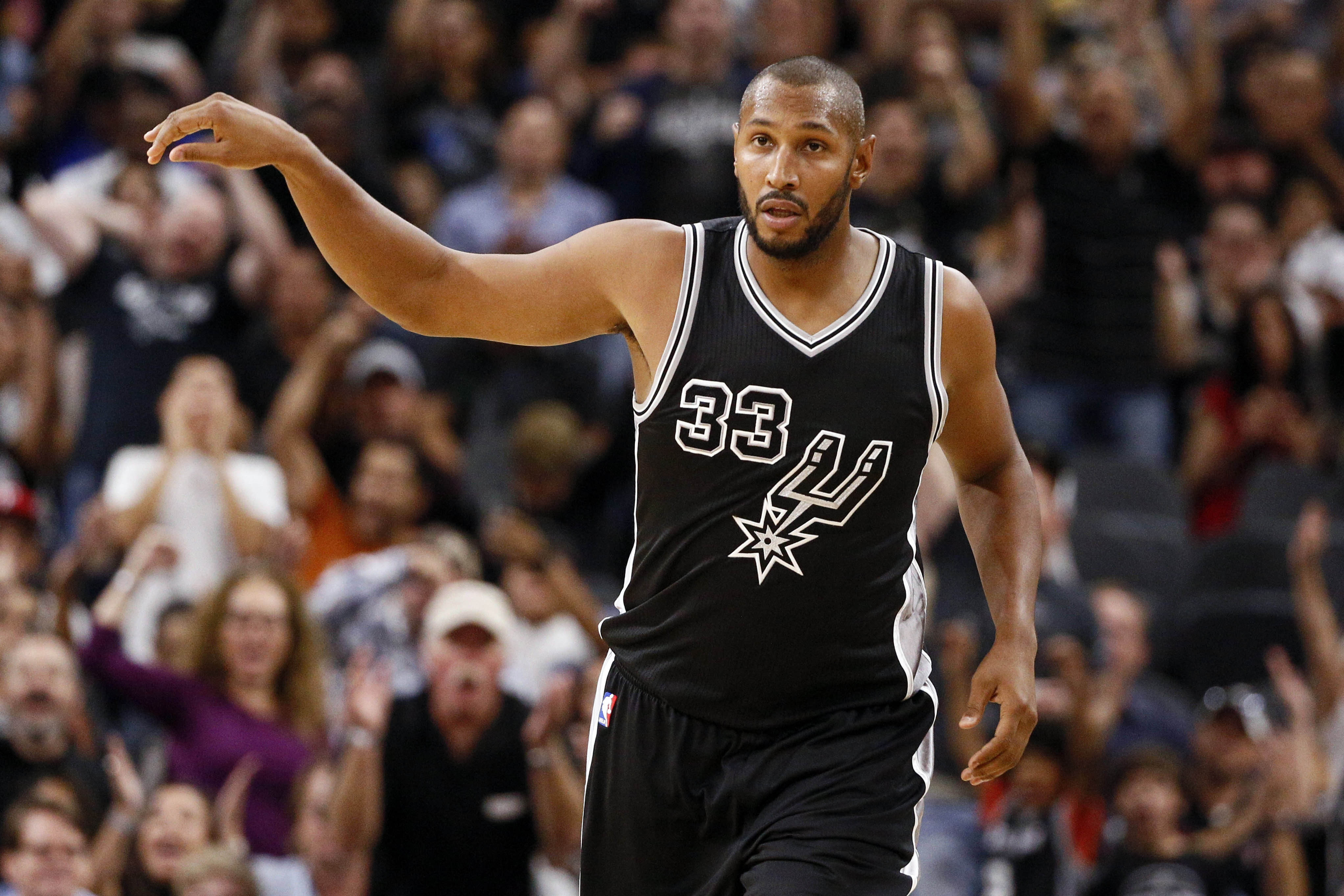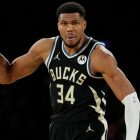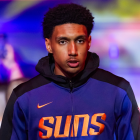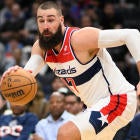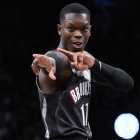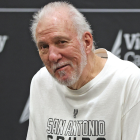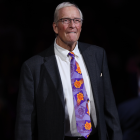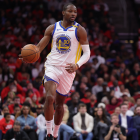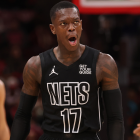Sitting at a table in the employee break room of a Barnes and Noble in a high-end shopping center in San Antonio, Boris Diaw was in his element.
Wearing a National Geographic T-shirt and sipping on a coffee from Starbucks, Diaw was in a technical discussion with a photographer from the San Antonio Express-News about cameras and lenses. Quickly listing off the technical specifications of different cameras and expressing which models he prefers, Diaw’s love for photography was on full display within this small talk.
More than just a hobby, Diaw is a serious photographer and spends most of his summers capturing images from his various safari adventures in Africa. His Instagram account is littered with pictures from his trips and all of the photos are expertly and artistically shot. Diaw has been regularly going on safaris since his rookie year, taking pictures and marveling at the wildlife. In fact, it was after shadowing acclaimed National Geographic photographer Steve Winter on a trip to India to photograph tigers that Diaw took his passion for photography to next level. Winter complimented Diaw's work and encouraged him to continue taking pictures, so he did.
The result?
A children’s book co-authored with Kitson Jazynka based on his safari adventures called Hoops to Hippos: True Stories of a Basketball Star on Safari.
Under the umbrella of National Geographic Kids, the book was released in July and recounts Diaw’s personal experiences on safari while also bringing awareness to endangered animals like elephants, lions and rhinos. The photos Diaw took on his various trips are used in the books and are on par with photos you would see in an actual issue of National Geographic (I personally loved the photos Diaw took of cheetah cubs covering their mother’s eyes while playing around).
With the book being for children, it is a light and fun read as Diaw lets the reader in on his various adventures of seeing wild dogs in Africa and helping a veterinarian on a conservation mission track rhinos. This is what makes the book truly worth reading. While it is probably similar to most children books about African wildlife, they are all stories and photos from Diaw himself -- you know, an NBA player, not exactly your typical National Geographic writer or photographer.
Diaw is not your typical power forward either, able to thread the needle on passes, defend more athletic players and make crafty moves in the post like this:
He has carved out a niche for himself in the NBA and with Hoops to Hippos, he's doing the same as a children’s book author. The book means even more to Diaw because the profits benefit his foundation which helps children in Africa.
Diaw spoke with CBS Sports before a book signing about his love for photography and his safari adventures. The following Q&A is lightly edited for clarity and flow.
Why did you want to make a book that was specifically for children?
It all started with my love for photography. I talk a little bit in the book about how I got passionate about photography, like when I got my first camera and started taking pictures. Then with my love of Africa and safari, it all kind of came together.
At first when I was taking pictures, I didn't share them with anybody. I was just doing it for me and keeping the photos on my computer. But then I was like maybe I should (share) these pictures so my idea was to do it through my foundation which helps children in Africa. Like right now, my foundation is helping a young woman in Senegal. So I figured why not make a book for kids and the proceeds would go back to other kids. That was the general idea behind the book.
And I also wanted to show off my passion for photography and animals. I love nature and love animals, so the idea was to share that with others. And I figured, it would be best to share that passion with young kids, who may also become passionate. I've already had kids saying that after reading the book, they want to go see wild animals on safari and help endangered species, which was exactly what I was going for.
@theborisdiaw my daughter says she hopes you enjoyed your drawings she gave you! Thanks for the book signing pic.twitter.com/ANa080x0ll
— Moni (@Tootle_T) December 20, 2015
How did your partnership with National Geographic start?
Well, it came in a couple steps. The first step was that I reached out to the NBPA (NBA Players Association) to get in contact with National Geographic a few years ago because I wanted to do some kind of internship with them. They put me in touch with a photographer named Steve Winter, who takes a lot of photos of big cats like tigers.
When I was talking with him, he said that he was going to India on a Tuesday for a story on tigers. So I said I'm coming with and booked a flight for that Monday and went to India to take pictures with him. He told me that he first started doing kid books for Nat Geo kids before working with Nat Geo, so that also helped plant the seed for me to come out with a kids book.
Where did your passion for animals come from?
I've always liked animals. I'm very adventurous and like to learn and discover things about new and different places. I always wanted to do a safari so when I had the time and means to do it early in my NBA career, I went. I fell in love the first time I went and told myself that I'm going to do this every summer. So I've gone on safari for the last eight years.
What makes taking pictures of animals different than regular photography?
Well, it's not scripted and that's what I like about wildlife photography. I do that more than studio or fashion photography because of that. You have to just deal with whatever nature gives you. Sometimes you want to take a great picture of a lion, but you can't. You are just going to be here for two hours and try to not fall asleep because there won't be anything exciting happening. But then, they will get up and interact, play with their cubs and that's when something happens. You never know though, you just have to take it all in. It definitely takes a great deal of patience, because a lot of times you will go out on these drives and not see anything. You will be in the car for five hours and not see anything. But it's cool because it is peaceful.
What animals amaze you the most?
Definitely the big cats, they are the most fun to watch for sure. I've never seen a lion actually hunt but when they get in hunt mode and get low to the grass that is amazing to see.
Kind of going back to being patient, you were on a French game show with Tony Paker that involved a tiger in the summer. There's a great clip of you roaring at the tiger, trying to get its attention, have you ever done that when you are out on safari and want to get a photo?
(Laughs) Maybe sometimes. If you want them to look around, me or the ranger may make a little noise every now and then.
Why was it important for you to bring attention to endangered animals with your book?
When you see all of these animals and they are telling you that there are only this many left, it reminds you how endangered some species truly are. You go to a country like Botswana to see rhinos and then they tell you that there are no more rhinos here. There used to be thousands but now, they are no more. It is a sad thing. One of the stories in the book is about a project we did to try and protect the rhinos. We put a microchip in them to track their movements. When you see how beautiful nature is, you want to do whatever you can to protect it.
Since you are such a photography aficionado, what are your feelings on people using their phones and Instagram for photos? Do you think it is taking away from the art of photography?
I don't think so. I think it helps because you don't necessarily need a big camera to express you. A lot of people take great photos with their iPhones. It is just different.
I took some friends for my birthday on safari and they tried to take pictures with their phones but that don't work. It works with everyday things and scenery but you need a real camera if you want to get serious.
Are you planning on coming out with another book in the future?
We don't know. I'm going to keep taking pictures and some of my photos have been in actual issues of National Geographic but another book is a possibility. I would love to do it if I can.
